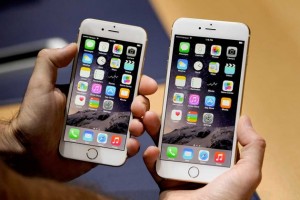In the glamorous life of a student it is considered lucky to eat breakfast and be able to wake up at the cringing sound of an alarm clock. Lunch always seems to come at an awkward time of day, where we grab food at the closest and cheapest place. Usually convenience and cheap doesn’t seem to collaborate well with healthy, actually they seem to despise each other.
So how does the up and coming world of healthy fast food sound? At first you may be thinking of dollar signs, but one company has differentiate itself and found a way to produce healthy affordable options for on the go lunches.  Tender Greens, a healthy fast food joint, is a rapidly growing start up company in California. With the growing demand they found themselves in need of a reliable produce supplier. The idea to turn old abandoned buildings into indoor growing facilities was created, making it a one of a kind sustainable business practice. This company is trying to fuse healthy living, affordability and convenience while trying to convince the consumer they can deliver all this.
Tender Greens, a healthy fast food joint, is a rapidly growing start up company in California. With the growing demand they found themselves in need of a reliable produce supplier. The idea to turn old abandoned buildings into indoor growing facilities was created, making it a one of a kind sustainable business practice. This company is trying to fuse healthy living, affordability and convenience while trying to convince the consumer they can deliver all this.
This seems to be more of a movement. Many of the fast food places similar to Tender Greens, are now becoming a popular trend as many are jumping on the health food band wagon. Consumers however, are demanding the top quality ingredients with the added ambiance of a finer dinning experience.

As a student I understand the need for a healthy place to eat that serves real nutrition in a take out box. So lets skip the theatrics, hand me my salad and let me try to beat this freshman 15.
Works Cited
LI, Shan. “Bye-bye, Burgers: New Fast-food Chains Bet on Healthy Eating.” Los Angeles Times. 2 Nov. 2014. Web. 10 Nov. 2014.

 It is interesting to see Canadians crossing the border in hopes of better sales even as our dollar drops to lows of 88 cents and is expected to reach 84 cents, a level that hasn’t been seen since 2009. Canadians are not choosing to shop at home because there is little to no incentive and flee in search of US bargains.
It is interesting to see Canadians crossing the border in hopes of better sales even as our dollar drops to lows of 88 cents and is expected to reach 84 cents, a level that hasn’t been seen since 2009. Canadians are not choosing to shop at home because there is little to no incentive and flee in search of US bargains.
 There are four aspects in which the company can improve upon; ethics, community involvement, environmental issues, and well being of employees. When done properly this practice can lead to large opportunity for growth within and outside the company.
There are four aspects in which the company can improve upon; ethics, community involvement, environmental issues, and well being of employees. When done properly this practice can lead to large opportunity for growth within and outside the company. As Ariella stated the Wall Street Journal article tells of a man who had contracted Ebola while in Africa, they mentioned he might have eaten at a restaurant, the Meatball Shop. We can just imagine how many customers remained far away from that local business. If this fear seems irrational, it is. The fear should not be placed on whether we contract Ebola but how this is effecting Africa economically and in a broader sense, in the long run how it will effect international markets negatively.
As Ariella stated the Wall Street Journal article tells of a man who had contracted Ebola while in Africa, they mentioned he might have eaten at a restaurant, the Meatball Shop. We can just imagine how many customers remained far away from that local business. If this fear seems irrational, it is. The fear should not be placed on whether we contract Ebola but how this is effecting Africa economically and in a broader sense, in the long run how it will effect international markets negatively.

